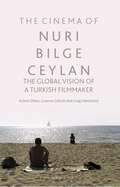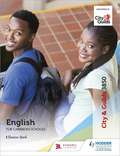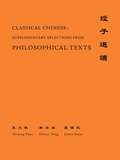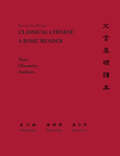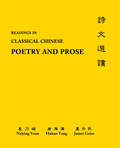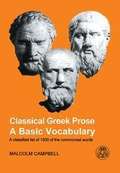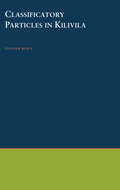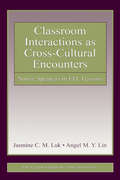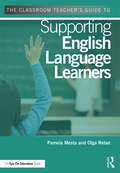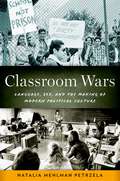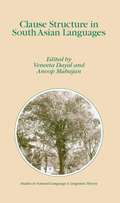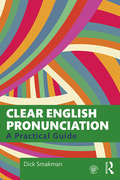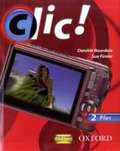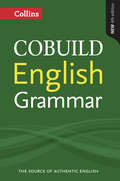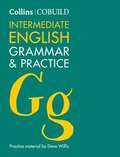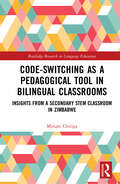- Table View
- List View
The Cinema of Nuri Bilge Ceylan: The Global Vision of a Turkish Filmmaker
by Bülent Diken Graeme Gilloch Craig HammondFilm maker Nuri Bilge Ceylan's meditative, visually stunning contributions to the 'New Turkish Cinema' have marked him out as a pioneer of his medium. Reaping success from his prize-winning, breakout film Uzak (2002), and from later festival favourites Once Upon a Time in Anatolia (2011) and Winter Sleep (2014), he has quickly established himself as an original and provocative writer, director and producer of 21st century cinema. In an age where Turkey's modernisation has created societal tensions and departures from past tradition, Ceylan's films present a cinema of dislocation and a vision of 'nostalgia' understood as homesickness: sick of being away from home; sick of being at home. This book offers an overdue study of Ceylan's work and a critical examination of the principle themes therein. In particular, chapters focus on time and space, melancholy and loneliness, absence, rural and urban experience, and notions of paradox, as explored through films which are often slow and uncompromising in their pessimistic outlook.Moving on from the tendency to situate Ceylan's oeuvre exclusively within the canon of 'New Turkish Cinema', one of this book's major achievements is also to assess the influence of classic European thought, literature and film and how such a notably minimal - and in many ways nationally-specific - approach translates to an increasingly transnational context for film. This will prove an important book for film students and scholars, and those interested in Turkish visual culture.
City & Guilds 3850: English for Caribbean Schools
by Sharon Ann StarkDevelop the reading, writing, speaking and listening skills needed to succeed with the only resource written specifically for the Caribbean region and published in association with City & Guilds.This resource is ideal for students, trainees and adults who desire to improve their language skills whether in preparation for further education or for employment opportunities.- Thoroughly and systematically explore topics across each level with clear explanations, worked examples, tasks and test your knowledge multiple choice activities.- Focus your learning on the key concepts and strategies with learner tips and helpful reminders throughout. - Provides comprehensive coverage of all three certification levels, with content written by experienced examiners. -Get exam ready with clear objectives which indicate the skills to be developed and the areas of the examination targeted. -Improve language skills with everyday transactional uses of English.
¡Claro! 2 Student Book
by Tony Weston José Antonio García SánchezBuild the skills at KS3 for success at GCSE
Classical Chinese: Selections from Historical Texts (The Princeton Language Program: Modern Chinese #52)
by Naiying Yuan James Geiss Hai-tao TangSupplementary readings to Classical Chinese: A Basic Reader—a must for every student of ChineseThis book presents selected historical texts and annotations to instruct, inform, and inspire students of Chinese. Taken from the works known as the Four Histories, these texts offer insights into the political, social, economic, and cultural aspects of China over a long period of time. The comprehensive annotations provide full pronunciation in pinyin, the grammatical function of individual words, and a full explication of the texts.One of the supplementary readings to Classical Chinese: A Basic Reader, this volume includes eight selections from the Shi Ji and two each from the Han Shu, the Hou Han Shu, and the San Guo Zhi. Each unfolds a fascinating account of the historical events and figures that represent certain salient values or distinctive cultural characteristics of what has come to be the Chinese tradition.The Shi Ji, a grand history by Sima Qian chronicling three thousand years of Chinese history, is divided into five sections of 130 chapters. Sima Qian is especially noted for his biographical style, and his work is considered the first and only "universal history" of China. The Han Shu, by Ban Gu, recounts the history of a single dynasty and is known for its dynastic style in depicting history. Together, these two histories represent paradigms of Chinese historiography. The Hou Han Shu, by Fan Ye, and the San Guo Zhi, by Chen Shou, continue this tradition of excellence. These four works are known collectively as the Four Histories.All texts are fully annotated to include a pinyin version marking the pronunciation of each word, glosses of each word by grammatical function and its meaning in the text, as well as detailed explication of each word. The exercises at the end of each selection are intended to help students apply newly gained knowledge, better appreciate Chinese history, and stimulate interest in additional reading.
Classical Chinese: Selections from Philosophical Texts (PDF) (Supplement #4)
by Naiying Yuan Hai-Tao Tang James GeissClassical Chinese: Selections from Philosophical Texts continues the rigorous standard set forth in the main, three-volume Classical Chinese: A Basic Reader. Organized into four sections, this supplementary volume sets forth the key concepts and writings of Confucius, Mencius, Laozi, and Zhuangzi-providing key insight into their beliefs and literary styles. The beauty of these original texts and the insightful annotations that accompany them will provide students of Chinese with a glimpse into the fountainhead of China's intellectual tradition. The main text and its four supplementary volumes together represent the most comprehensive and authoritative textbook on the language, literature, philosophy, history, and religion of premodern China. Rigorously and extensively field-tested and fine-tuned for years in classroom settings by three members of the Chinese Linguistics Project at Princeton University, it sets a new standard for the field. With Classical Chinese: A Basic Reader and its supplementary volumes, Naiying Yuan, Haitao Tang, and James Geiss provide the definitive new resource for students and instructors of classical Chinese language and culture, one whose impact will be lasting.
Classical Chinese: A Basic Reader (PDF)
by Naiying Yuan Haitao Tang James GeissClassical Chinese is the most comprehensive and authoritative textbook on the language, literature, philosophy, history, and religion of premodern China. Rigorously and extensively field-tested and fine-tuned for years in classroom settings, it sets a new standard for the field. Originally published in three volumes, Classical Chinese appears here in one convenient and easy-to-use volume.Classical Chinese contains forty selections from texts written between the fifth century BC and the first century AD, during which the classical Chinese language was fully developed and standardized. These passages, which express key themes in Chinese humor, wit, wisdom, moral conviction, and political ideals, are arranged in the order of complexity of the grammatical patterns they exemplify. Uniquely, each text is translated into both modern Chinese and English. A detailed glossary defines unfamiliar terms and names found in the first part of the textbook, and the last section features in-depth grammatical analyses, in which every sentence in the main selections is fully diagrammed to show the grammatical relations between their various parts. Corresponding exercises review and reinforce the materials. Four supplementary volumes—an introduction to grammar, readings in poetry and prose, selected historical texts, and selected philosophical texts—are separately available for use in conjunction with this basic reader.Classical Chinese provides a definitive resource for students and instructors of classical Chinese language and culture.
Classical Chinese: Readings in Poetry and Prose (PDF) (The Princeton Language Program: Modern Chinese #14)
by Naiying Yuan Hai-Tao Tang James GeissThis supplemental volume continues the rigorous standard set forth in the main, three-volume Classical Chinese: A Basic Reader while reinforcing its linguistic lessons from carefully chosen representative works. Comprised of three parts--"Poetry," "Lyrics," and "Prose"--it presents texts, chronologically, that represent the artistic embodiment of China's Confucian and Taoist thought. Two introductions separately describe the structural and formal features of regulated verse and parallel prose; each genre is unique to Chinese literature yet both share common characteristics tempered by the Chinese language. The main text and its four supplementary volumes together represent the most comprehensive and authoritative textbook on the language, literature, philosophy, history, and religion of premodern China. Field-tested and fine-tuned for years in classroom settings by three members of the Chinese Linguistics Project at Princeton University, it is the definitive new resource for students and instructors of classical Chinese language or culture.
Classical Chinese: Selections from Philosophical Texts (PDF) (The Princeton Language Program: Modern Chinese Ser. #16)
by Naiying Yuan Hai-Tao Tang James GeissClassical Chinese: Selections from Philosophical Texts continues the rigorous standard set forth in the main, three-volume Classical Chinese: A Basic Reader. Organized into four sections, this supplementary volume sets forth the key concepts and writings of Confucius, Mencius, Laozi, and Zhuangzi-providing key insight into their beliefs and literary styles. The beauty of these original texts and the insightful annotations that accompany them will provide students of Chinese with a glimpse into the fountainhead of China's intellectual tradition. The main text and its four supplementary volumes together represent the most comprehensive and authoritative textbook on the language, literature, philosophy, history, and religion of premodern China. Rigorously and extensively field-tested and fine-tuned for years in classroom settings by three members of the Chinese Linguistics Project at Princeton University, it sets a new standard for the field. With Classical Chinese: A Basic Reader and its supplementary volumes, Naiying Yuan, Haitao Tang, and James Geiss provide the definitive new resource for students and instructors of classical Chinese language and culture, one whose impact will be lasting.
Classical Greek Prose: A Basic Vocabulary (PDF)
by Malcolm CampbellThis handbook contains a classified list, with English equivalents, of 1500 words in common use among classical Greek historians, orators and philosophers. One hundred of these are dealt with at greater length in a supplement, which also focuses on a number of crucial idioms. The aim of the book is that learners drilled in these words over the course of a semester or two should find that they can read the texts of such authors as Thucydides, Plato and Demosthenes with a high degree of fluency. An alphabetical index is provided.
Classificatory Particles In Kilivila
by Gunter SenftCommon among the world's languages is the phenomenon of classification, a partly or fully grammatical division of the noun lexicon into distinct classes that ultimately derives from the human need to classify and filter data on various levels while communicating. In this book, Senft describes and develops a grammar of classificatory particles in Kilivila, an Austronesian language of the Trobriand Islanders in Papua New Guinea. Drawing largely on his anthropological and linguistic fieldwork in the islands, and emphasizing the use of classifiers in a social context, Senft provides quantitative data and a statistical profile of the status and use of these particles, and the classifier system that employs them.
Classroom Interactions as Cross-Cultural Encounters: Native Speakers in EFL Lessons (ESL & Applied Linguistics Professional Series)
by Jasmine C. Luk Angel M. LinClassroom Interactions as Cross-Cultural Encounters is about native English speakers teaching English as a global language in non-English speaking countries. Through analysis of naturally occurring dialogic encounters, the authors examine the multifaceted ways in which teachers and students utilize diverse communicative resources to construct, display, and negotiate their identities as teachers, learners, and language users, with different pedagogic, institutional, social, and political implications. A range of issues in applied linguistics is addressed, including linguistic imperialism, post-colonial theories, micropolitics of classroom interaction, language and identity, and bilingual classroom practices. Intended to help TESOL professionals of different cultural backgrounds, working in different sociocultural contexts, to critically understand how non-assimilationist, dialogic intercultultural communication with students can be achieved and built on for mutual cultural and linguistic enrichment and empowerment, this book:*emphasizes the sociocultural meanings and micropolitics of classroom interactions that reveal the complex realities of power and identity negotiations in cross-cultural interactions in ELT (English Language Teaching) classroom contexts;*revisits and reconstitutes the notion of native-speakerness and repositions the roles of native and non-native English teachers in the TESOL profession in the contexts of decolonization and globalization; *highlights the need to mobilize intercultural communicative resources for global communication;*addresses two major concerns of EFL (English as a Foreign Language) classroom researchers and teachers: student resistance and learning motivation; and*examines and analyzes the changing ideologies (both explicit and implicit) of teachers and students about English learning in the context of a post-colonial society, and how these ideologies are being enacted, reproduced, but also sometimes contested in EFL classroom interactions. Each chapter includes Questions for Reflection and Discussion to promote critical thinking and understanding of the issues discussed. Tuning-In discussion questions are provided in the three chapters on classroom data analysis to activate readers interpretive schemas before they examine the actual classroom episodes. The data are from an ethnographic study in post-colonial Hong Kong secondary schools involving four native English-speaker teachers and two bilingual Cantonese-English speaking teachers engaged in intercultural classroom dialogues with their Cantonese Hong Kong students. The rich, naturally occurring classroom data and in-depth analyses provide useful pedagogical materials for courses in EFL teacher education programs on classroom discourse analysis from sociocultural perspectives.
Classroom Interactions as Cross-Cultural Encounters: Native Speakers in EFL Lessons (ESL & Applied Linguistics Professional Series)
by Jasmine C. Luk Angel M. LinClassroom Interactions as Cross-Cultural Encounters is about native English speakers teaching English as a global language in non-English speaking countries. Through analysis of naturally occurring dialogic encounters, the authors examine the multifaceted ways in which teachers and students utilize diverse communicative resources to construct, display, and negotiate their identities as teachers, learners, and language users, with different pedagogic, institutional, social, and political implications. A range of issues in applied linguistics is addressed, including linguistic imperialism, post-colonial theories, micropolitics of classroom interaction, language and identity, and bilingual classroom practices. Intended to help TESOL professionals of different cultural backgrounds, working in different sociocultural contexts, to critically understand how non-assimilationist, dialogic intercultultural communication with students can be achieved and built on for mutual cultural and linguistic enrichment and empowerment, this book:*emphasizes the sociocultural meanings and micropolitics of classroom interactions that reveal the complex realities of power and identity negotiations in cross-cultural interactions in ELT (English Language Teaching) classroom contexts;*revisits and reconstitutes the notion of native-speakerness and repositions the roles of native and non-native English teachers in the TESOL profession in the contexts of decolonization and globalization; *highlights the need to mobilize intercultural communicative resources for global communication;*addresses two major concerns of EFL (English as a Foreign Language) classroom researchers and teachers: student resistance and learning motivation; and*examines and analyzes the changing ideologies (both explicit and implicit) of teachers and students about English learning in the context of a post-colonial society, and how these ideologies are being enacted, reproduced, but also sometimes contested in EFL classroom interactions. Each chapter includes Questions for Reflection and Discussion to promote critical thinking and understanding of the issues discussed. Tuning-In discussion questions are provided in the three chapters on classroom data analysis to activate readers interpretive schemas before they examine the actual classroom episodes. The data are from an ethnographic study in post-colonial Hong Kong secondary schools involving four native English-speaker teachers and two bilingual Cantonese-English speaking teachers engaged in intercultural classroom dialogues with their Cantonese Hong Kong students. The rich, naturally occurring classroom data and in-depth analyses provide useful pedagogical materials for courses in EFL teacher education programs on classroom discourse analysis from sociocultural perspectives.
The Classroom Teacher's Guide to Supporting English Language Learners
by Pamela Mesta Olga ReberThis book answers your key questions about educating English Language Learners (ELLs) and offers detailed guidance and concrete applications for your classroom. Designed as a one-stop-shop for classroom teachers of all grade levels and content areas, this book is chock full of essential information, delivered in a practical, concise format. In each chapter, you will find checklists, instructional strategies, tables, tools and ideas for next steps. The resources and examples provided are easy to implement and can be used the next day in your teaching. Topics addressed include: Getting to know your ELLs Considering how culture, language and academic background impact learning Bridging the home/school connection Pairing content and language objectives Gauging learner progress Collaborating with ELL staff Much more!
The Classroom Teacher’s Guide to Supporting English Language Learners
by Pamela Mesta Olga ReberThis book answers your key questions about educating English Language Learners (ELLs) and offers detailed guidance and concrete applications for your classroom. Designed as a one-stop-shop for classroom teachers of all grade levels and content areas, this book is chock full of essential information, delivered in a practical, concise format. In each chapter, you will find checklists, instructional strategies, tables, tools and ideas for next steps. The resources and examples provided are easy to implement and can be used the next day in your teaching. Topics addressed include: ◆ Getting to know your ELLs ◆ Considering how culture, language and academic background impact learning ◆ Bridging the home/school connection ◆ Pairing content and language objectives ◆ Gauging learner progress ◆ Collaborating with ELL staff ◆ Much more!
Classroom Wars: Language, Sex, and the Making of Modern Political Culture
by Natalia Mehlman PetrzelaThe schoolhouse has long been a crucible in the construction and contestation of the political concept of "family values." Through Spanish-bilingual and sex education, moderates and conservatives in California came to define the family as a politicized and racialized site in the late 1960s and 1970s. Sex education became a vital arena in the culture wars as cultural conservatives imagined the family as imperiled by morally lax progressives and liberals who advocated for these programs attempted to manage the onslaught of sexual explicitness in broader culture. Many moderates, however, doubted the propriety of addressing such sensitive issues outside the home. Bilingual education, meanwhile, was condemned as a symbol of wasteful federal spending on ethically questionable curricula and an intrusion on local prerogative. Spanish-language bilingual-bicultural programs may seem less relevant to the politics of family, but many Latino parents and students attempted to assert their authority, against great resistance, in impassioned demands to incorporate their cultural and linguistic heritage into the classroom. Both types of educational programs, in their successful implementation and in the reaction they inspired, highlight the rightward turn and enduring progressivism in postwar American political culture. In Classroom Wars, Natalia Mehlman Petrzela charts how a state and a citizenry deeply committed to public education as an engine of civic and moral education navigated the massive changes brought about by the 1960s, including the sexual revolution, school desegregation, and a dramatic increase in Latino immigration. She traces the mounting tensions over educational progressivism, cultural and moral decay, and fiscal improvidence, using sources ranging from policy documents to student newspapers, from course evaluations to oral histories. Petrzela reveals how a growing number of Americans fused values about family, personal, and civic morality, which galvanized a powerful politics that engaged many Californians and, ultimately, many Americans. In doing so, they blurred the distinction between public and private and inspired some of the fiercest classroom wars in American history. Taking readers from the cultures of Orange County mega-churches to Berkeley coffeehouses, Natalia Mehlman Petrzela's history of these classroom controversies sheds light on the bitterness of the battles over diversity we continue to wage today and their influence on schools and society nationwide.
Classroom Wars: Language, Sex, and the Making of Modern Political Culture
by Natalia Mehlman PetrzelaThe schoolhouse has long been a crucible in the construction and contestation of the political concept of "family values." Through Spanish-bilingual and sex education, moderates and conservatives in California came to define the family as a politicized and racialized site in the late 1960s and 1970s. Sex education became a vital arena in the culture wars as cultural conservatives imagined the family as imperiled by morally lax progressives and liberals who advocated for these programs attempted to manage the onslaught of sexual explicitness in broader culture. Many moderates, however, doubted the propriety of addressing such sensitive issues outside the home. Bilingual education, meanwhile, was condemned as a symbol of wasteful federal spending on ethically questionable curricula and an intrusion on local prerogative. Spanish-language bilingual-bicultural programs may seem less relevant to the politics of family, but many Latino parents and students attempted to assert their authority, against great resistance, in impassioned demands to incorporate their cultural and linguistic heritage into the classroom. Both types of educational programs, in their successful implementation and in the reaction they inspired, highlight the rightward turn and enduring progressivism in postwar American political culture. In Classroom Wars, Natalia Mehlman Petrzela charts how a state and a citizenry deeply committed to public education as an engine of civic and moral education navigated the massive changes brought about by the 1960s, including the sexual revolution, school desegregation, and a dramatic increase in Latino immigration. She traces the mounting tensions over educational progressivism, cultural and moral decay, and fiscal improvidence, using sources ranging from policy documents to student newspapers, from course evaluations to oral histories. Petrzela reveals how a growing number of Americans fused values about family, personal, and civic morality, which galvanized a powerful politics that engaged many Californians and, ultimately, many Americans. In doing so, they blurred the distinction between public and private and inspired some of the fiercest classroom wars in American history. Taking readers from the cultures of Orange County mega-churches to Berkeley coffeehouses, Natalia Mehlman Petrzela's history of these classroom controversies sheds light on the bitterness of the battles over diversity we continue to wage today and their influence on schools and society nationwide.
Clause Structure in South Asian Languages (Studies in Natural Language and Linguistic Theory #61)
by Anoop Mahajan V. DayalThe researchers in the field of theoretical and theoretically inclined descriptive linguistics have for a long time felt a need for detailed and clearly presented linguistic treatments of various syntactic phenomena in South Asian languages. Clause Structure in South Asian Languages: provides a comprehensive overview and covers major aspects of clause structure in a variety of South Asian languages; provides detailed analyses of several aspects of phrase structure of many prominent South Asian languages; gives theoretically up-to-date treatment of several important issues in South Asian syntax and semantics; contains papers by some of the most prominent linguists working on South Asian languages.
Clear English Pronunciation: A Practical Guide
by Dick SmakmanClear English Pronunciation provides students with the tools to effectively communicate in English without centring solely on native-speaker pronunciation models. The focus of the book is on individual pronunciation targets rather than a one-size-fits-all approach. Divided into four sections, each featuring detailed articulatory explanations, sample sentences, and recordings to help learners improve their pronunciation, this book: introduces the phenomenon of pronunciation as part of a broader communicative realm; explains and demonstrates the melody and rhythm of understandable and natural English pronunciation; supports students in identifying and practicing their own pronunciation issues. Supported by an interactive companion website which features recordings and expanded explanations of key topics, Clear English Pronunciation is an essential textbook for international learners of English who want to improve their pronunciation skills in diverse social settings. https://www.universiteitleiden.nl/clearenglishpronunciation
Clear English Pronunciation: A Practical Guide
by Dick SmakmanClear English Pronunciation provides students with the tools to effectively communicate in English without centring solely on native-speaker pronunciation models. The focus of the book is on individual pronunciation targets rather than a one-size-fits-all approach. Divided into four sections, each featuring detailed articulatory explanations, sample sentences, and recordings to help learners improve their pronunciation, this book: introduces the phenomenon of pronunciation as part of a broader communicative realm; explains and demonstrates the melody and rhythm of understandable and natural English pronunciation; supports students in identifying and practicing their own pronunciation issues. Supported by an interactive companion website which features recordings and expanded explanations of key topics, Clear English Pronunciation is an essential textbook for international learners of English who want to improve their pronunciation skills in diverse social settings. https://www.universiteitleiden.nl/clearenglishpronunciation
Clic!: Students' Book Plus(PDF)
by Daniele BourdaisThis popular new KS3 French course has a uniquely differentiated approach from Year 7 onwards. The core course has separate Students Books (STAR and PLUS) to help you manage the greater diversity of prior language learning at Year 7, and now includes new Access resources to help your most reluctant learners.nbsp;
COBUILD English Grammar (Collins COBUILD Grammar)
by Collins CobuildThis new edition of the Collins COBUILD English Grammar is a modern, global and learner-focussed grammar reference, aimed at learners and teachers of English.
COBUILD Intermediate English Grammar And Practice: B1-B2 (Collins COBUILD Grammar)
by Collins CobuildCode-Switching as a Pedagogical Tool in Bilingual Classrooms: Insights from a Secondary STEM Classroom in Zimbabwe (Routledge Research in Language Education)
by Miriam ChitigaPresenting a mixed methods study conducted in a bilingual mathematics classroom in Zimbabwe, this text reveals the semantic pedagogical functions and linguistic forms of code-switching during STEM instruction. Code-Switching as a Pedagogical Tool in Bilingual Classrooms offers a detailed analysis of code-switching in the context of educational linguistics, and reveals ten major pedagogical techniques which illustrate how teachers use code-switches to engage students and provide guidance, clarification, discipline, and recaps during individual and whole-class interactions. Chapters highlight that code-switching can be used in a targeted manner to harness the cognitive potential of bilingual speakers and enhance instruction. Ultimately, the text identifies implications for teacher education, language policy, and educational leadership more broadly, and demonstrates intersections with key areas including functional, critical, and cultural literacy. This text will benefit researchers, academics, and educators with an interest in bilingualism, applied linguistics, and secondary education more broadly. Those specifically interested in multicultural education, sociolinguistics and educational policy will also benefit from this book.
Code-Switching as a Pedagogical Tool in Bilingual Classrooms: Insights from a Secondary STEM Classroom in Zimbabwe (Routledge Research in Language Education)
by Miriam ChitigaPresenting a mixed methods study conducted in a bilingual mathematics classroom in Zimbabwe, this text reveals the semantic pedagogical functions and linguistic forms of code-switching during STEM instruction. Code-Switching as a Pedagogical Tool in Bilingual Classrooms offers a detailed analysis of code-switching in the context of educational linguistics, and reveals ten major pedagogical techniques which illustrate how teachers use code-switches to engage students and provide guidance, clarification, discipline, and recaps during individual and whole-class interactions. Chapters highlight that code-switching can be used in a targeted manner to harness the cognitive potential of bilingual speakers and enhance instruction. Ultimately, the text identifies implications for teacher education, language policy, and educational leadership more broadly, and demonstrates intersections with key areas including functional, critical, and cultural literacy. This text will benefit researchers, academics, and educators with an interest in bilingualism, applied linguistics, and secondary education more broadly. Those specifically interested in multicultural education, sociolinguistics and educational policy will also benefit from this book.
Code-switching in Bilingual Children (Studies in Theoretical Psycholinguistics #37)
by Katja F. CantoneThis volume demonstrates that mixed utterances in young bilinguals can be analyzed in the same way as adult code-switching. It provides new insights not only in the field of code-switching and of language mixing in young bilinguals, but also in issues concerning general questions on linguistic theory which are difficult to be answered with monolingual data.
